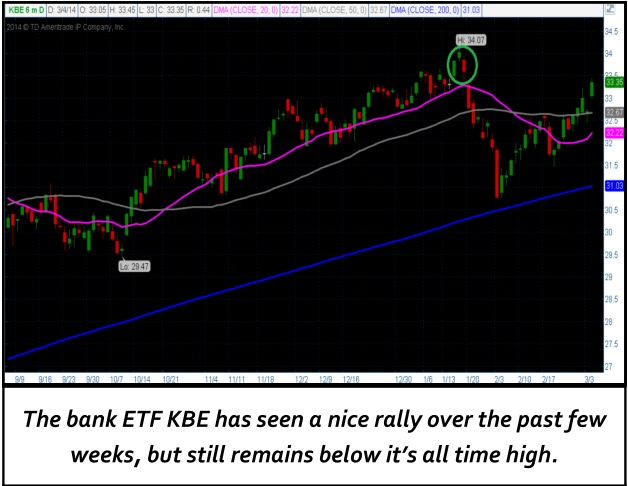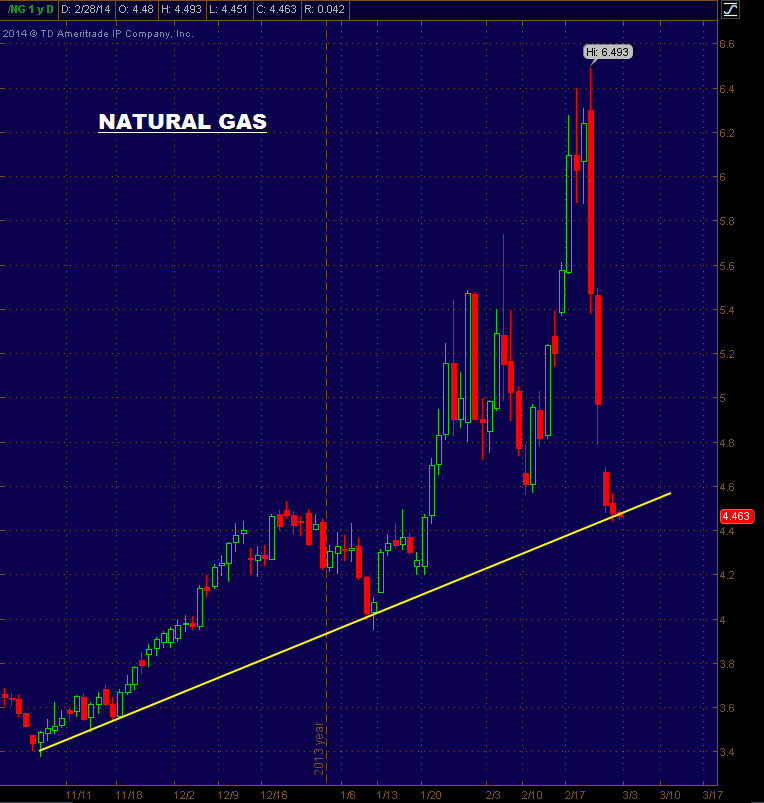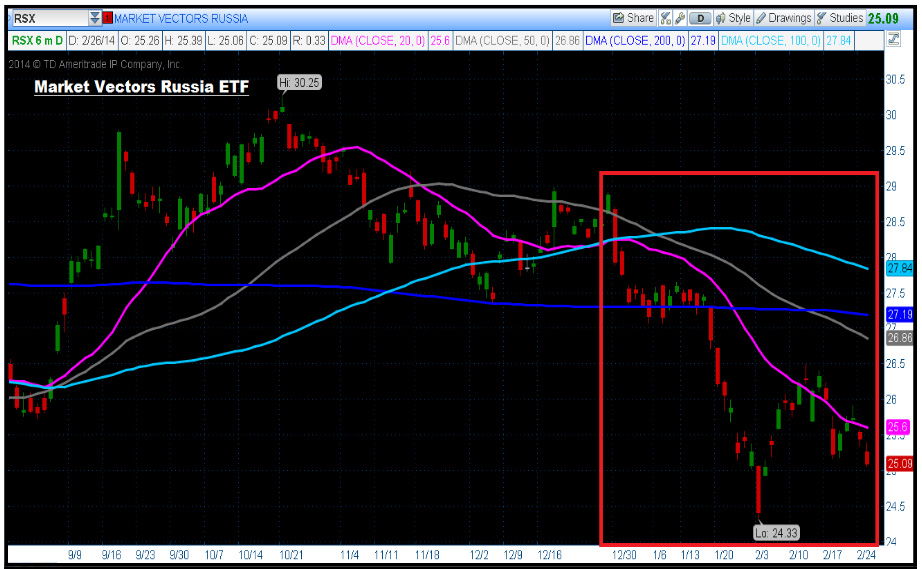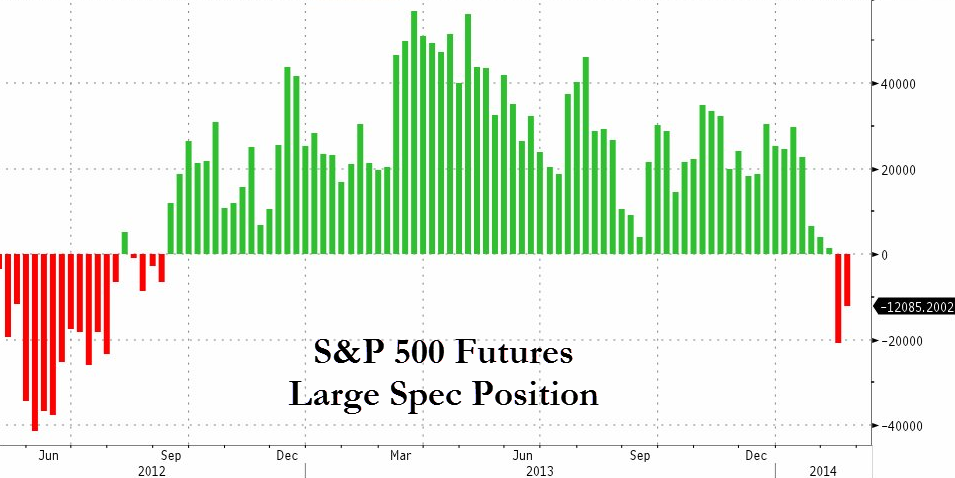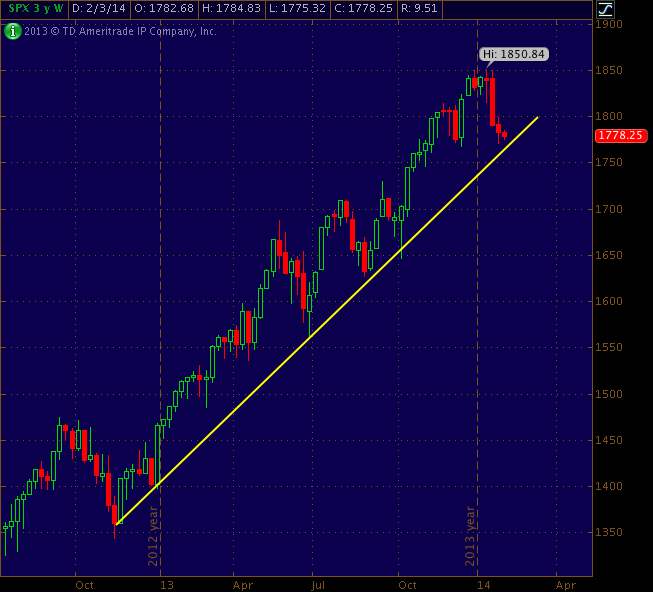Sevens Report Analyst Tyler Richey Featured on Market Watch Discussing Crude Oil Prices
/in Investing/by Tom 2The Economy: A Look Back and What’s Ahead (3.3.14)
/in Investing/by Tom 2Last Week
Economic data was better-than-expected last week and helped further break the previously relentless string of “misses” versus expectations. And, although economic data was somewhat overshadowed last week by events in the Ukraine and as investors looked ahead to the critical week of data looming, there were some important anecdotal releases that imply the drop-off in economic data we saw in December/January is leveling off. That helped stocks rally to new all-time highs.
New home sales data were shockingly good, rising to 468K saar, a multi-year high (and the highest level since the economic recovery started). But, while the number was much better-than-expected, it was driven higher by big sales gains in the Northeast and South. Seeing as they were the hardest-hit regions weather-wise in January, it doesn’t exactly reinforce the “weather” explanation for all the other disappointing data.
Regardless, the market liked the report and homebuilders caught a bounce because of very low new home inventories and strong pricing going forward. Looking beyond this one positive report, though, most of the January housing data showed the recovery is continuing to lose positive momentum. It’ll be very important for the longer-term health of the market and the economy to see the housing data stabilize once the weather “noise” is out of the reports.
Durable goods was the other notable release from last week, as the key “New Orders of Non-Defense Capital Goods ex-Aircraft” rose 1.8%, after the December number was revised lower from –0.6% to –1.7%. The market also welcomed this number, as it implies we’re not seeing the very steep drop-off in capital expenditures from businesses that the January durable goods repot implied.
Finally, the most-effectual piece of data from an investment standpoint last week came from Europe. The February flash HICP (their CPI) saw “core” HICP rise 1.0% year-over-year in February, higher than the 0.8% that was expected. That’s important because it almost certainly removes any chance that the ECB will take further accommodative action at this week’s meeting (or beyond that, for the foreseeable future). And, that is a continued positive for the euro and high-yielding European bonds, which remain my favorite destination for any fixed income capital that can stomach some degree of risk.
Turning to the Fed, Janet Yellen gave the Senate portion of her “Humphrey-Hawkins” testimony Thursday, after the initial date was postponed by weather. The testimony was expected to be a non-event, as everyone assumed she would largely repeat what she said at the House testimony two weeks earlier, and it met those expectations.
Yellen again reiterated that the Fed’s strong preference is to continue tapering QE, although it’s not on a “pre-set course.” And, weather has played a role in the recent disappointing data, but to what extent isn’t clear. Bottom line is the outlook for Fed policy remains the same: It will take seriously weak data this week to get the Fed to delay further tapering of QE at the March meeting.
This Week
Economically this is the most important week of the year, plain and simple. And, it’s important because we are going to get a lot more insight into the two critical “macro” questions the market is currently facing: Was the dip in U.S. economic activity the past two months mostly due to weather? And, is the Chinese economy stable, or is it contracting further? Where the market goes in the coming weeks will depend on both answers.
Starting with the global manufacturing PMIs, we’ve already gotten the Chinese PMI (it beat expectations and importantly stayed above the 50 level) and the European data, while the U.S. report comes at 10 AM this morning. Global composite PMIs (both service sector and manufacturing) are released Tuesday night in China and Wednesday morning in the EU and U.S.
In addition to getting the latest insight into the state of the global economy, it’s also jobs week here in the U.S. ADP comes Wednesday, jobless claims and Challenger layoff survey is Thursday, and then the all-important government jobs report is Friday morning (early estimate is for 150K).
This jobs report, and to a slightly lesser degree the PMIs later this morning, are the doves’ last chance for the data to alter the outlook for Fed policy. If the jobs numbers remain low (say another sub-100K print with the December/January numbers unrevised), then the outlook for a further tapering of QE in March will be called into question, although I personally think the data will have to be pretty bad to “taper the taper.” But, if there’s a chance for it to happen, it’s going to be this week.
There is also a Bank of England and ECB meeting Thursday morning, although given events of last week (the EU HICP) neither bank is expected to alter policy. Both meetings should be relative non-events.
Bottom line is we will have a lot better insight into the state of the U.S. and global economy at the end of this week, and how those economies “look” will dictate which direction equity markets trade over the coming weeks, regardless of what happens in the Ukraine.
Looking to Get Long Natural Gas? Now May Be Your Chance.
/in Investing/by Tom 2The froth seems to have come out of the natural gas market now that the futures have fallen over 30% since hitting new highs earlier this week. Yesterday, natural gas was down just 0.9% (compared to the multiple 10%+ moves the market has seen this month).
Yesterday was inventory day, and the EIA reported that supply fell by -95 Bcf vs. (E) -101 Bcf, so a slightly smaller draw than expected. But, unlike in recent weeks, the market had little reaction and the fact that the market didn’t sell off on the news is what leads me to believe the “froth” is indeed out of the market.
As we near the end of the draw season, supply levels are more than 35% below the five-year average. Approaching the critical 1,200 Bcf mark leaves natural gas users with little margin for error as we enter the build season. Technically the situation in nat gas is also bullish as front month futures hit support yesterday around the $4.45 level. That support level is the same technical up trend that has been in place since the “big rally” began back in early November.
You would have to have a big tolerance for volatility, but for the first time in 2+ months, I can make the case for buying natural gas itself at these levels (via UNG or the futures), as your stop is clearly a violation of that trendline dating back to November. I’d continue to hold natural gas E&P ETFs as well in here, and look to add or initiate positions on any further weakness.
The Economy: A Look Back and What’s Ahead (2.24.14)
/in Investing/by Tom 2The Economy: A Look Back and What’s Ahead (1.21.14)
/in Investing/by Tom 2The Goldman Sachs Research Note Wasn’t Really Bearish
/in Investing/by Tom 2Address
4880 Donald Ross Rd., Suite 210
Palm Beach Gardens, FL 33418
info@sevensreport.com
Phone
(561) 408-0918

